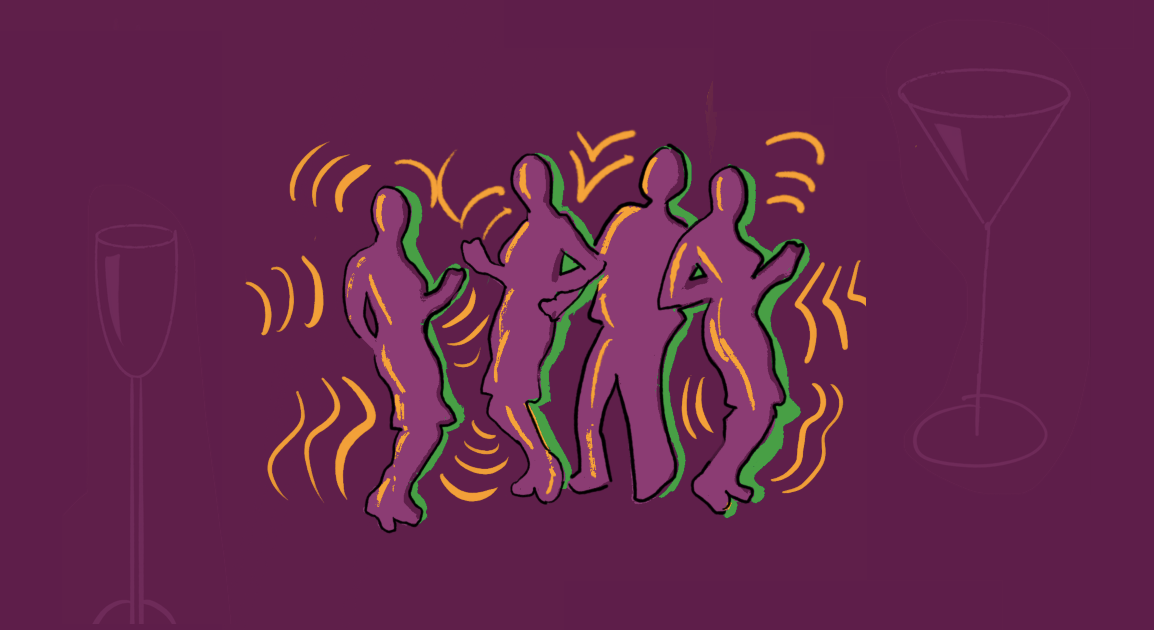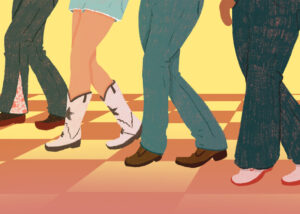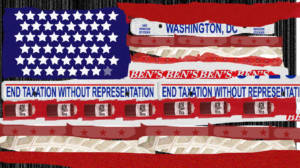For his “Tombs Night,” the time-honored Georgetown tradition where students celebrate turning 21 by throwing a party before heading to The Tombs, Brendan Carroll (SFS ’26) hosted a function where all 200 attendees put their phones away.
“I want people to be as actively engaged in the party as they can be,” Carroll said. “When everyone got here, there was no way I could make them not take a phone out, but it seemed like everyone just went along with it.”
Although he was initially unsure about if attendees would enjoy a phoneless party, Carroll found that most appreciated the opportunity to be present with new people without the barriers of technology.
“I think people just didn’t realise that it was something that they wanted until the opportunity was created for them,” Carroll said. “There were a lot of crossovers and friends who interacted that we didn’t expect and funny stories that we wouldn’t have anticipated, and that was what sold the night.”
Carroll’s phoneless party is part of a growing on- and off-campus trend to embrace authentic connection and unplug from the digital world. Celebrity chef and Hell’s Kitchen season three winner Rock Harper opened Hush Harbor, D.C.’s first phoneless bar and restaurant, on Sept. 5.
Looking for a solution to the distraction of technology in social settings, Harper partnered with Danny Hogenkamp, CEO of the technology company Grassroots Analytics and an offline-party advocate, to bring tech-free social interaction to D.C.
At Hush Harbor, attendees police their own phones. Once they arrive, partygoers place their devices in a Yondr pouch, a fabric bag that stays on you but is designed to keep your phone locked away while you’re in the venue. The pouch can only be unlocked by tapping them on a magnetic device provided by the host.
“The idea is to make it harder to access,” Lydia Peabody, a hostess at Hush Harbor, said. “If you’re expecting a call or you have a babysitter and you need to have your phone on for emergencies, by all means […] come to the host, unlock your phone, and take a call.”
Hush Harbor creates an atmosphere unlike other restaurants and bars dotting D.C. because of their tech-free approach. Peabody has observed increased interaction between strangers and more organic conversations because partygoers are unable to reach for their phones.
“I notice that people are talking to strangers at a bar. People aren’t leaving,” Peabody said. “They almost get sucked in because you’re not reading your phone and being like, ‘Oh, so-and-so messaged me to go here.’ You just live in the moment.”
The idea for Hush Harbor came from historic hush harbors, spaces that served as safe havens for enslaved African Americans to secretly socialize and practice cultural traditions under oppressive, pre-Civil War slavery laws.
Although Hush Harbor does not carry the same historic significance as its namesake, Peabody said it aligns with their purpose of offering a space for genuine community.
“I don’t know if it’s a safe haven away, but I think it’s a vessel to curate a really authentic connection,” Peabody said.
Peabody made the switch herself from an iPhone to a “dumbphone,” or a mobile phone without any smart features, last July. She did so after joining Hogenkamp’s Month Offline program, which allows D.C. locals to switch to a “dumbphone” for a month. She now serves as a board member of the program.
“It’s more subtle than people expect,” Peabody said about switching from an iPhone. “It really gives people more control and autonomy back, to be like, ‘I’m more in my life. I’m more in my body. I’m more where I am and not in this virtual world.’”
However, not everyone who goes to Hush Harbor comes in prepared to unplug. Some partygoers on the hunt for a weekend activity are completely unaware of the premise of the venue until they enter and are greeted by a Yondr pouch. Peabody recalled one group of bachelor party guests who were surprised by the phone rule.
“They were just wandering on H Street and they didn’t know it was a phone-free bar,” Peabody said. “They ended up staying for so long. So I think if people find it and they stumble upon it, it’s sort of just like, ‘Whoa, how did we find this really cool space that I’ve never heard of?’”
For Carroll’s party, all attendees were notified beforehand about the party’s phoneless element, but he said he hesitated to host it at all. He thought it could be a challenge to bring people together and keep them from escaping into their own headspaces through their phones. So he anticipated the typical activities that would make people reach for their phones and planned around them.
“A lot of the time, you just take it out for a photo and then you end up getting distracted for five, 10 minutes,” Carroll said. “So we got cameras so people don’t have the instinct to replace what they might be using their phone for.”
While unconventional, Carroll’s phoneless party was a successful night. He received overwhelmingly positive reactions to the party. Once attendees were committed to the offline intention of the party, they did not even think about accessing their phones, suggesting that phoneless parties could become more popular.
“A lot of people the next day had texted and said ‘I didn’t even realise that I didn’t have it out until the end of the party,’” Carroll said.





